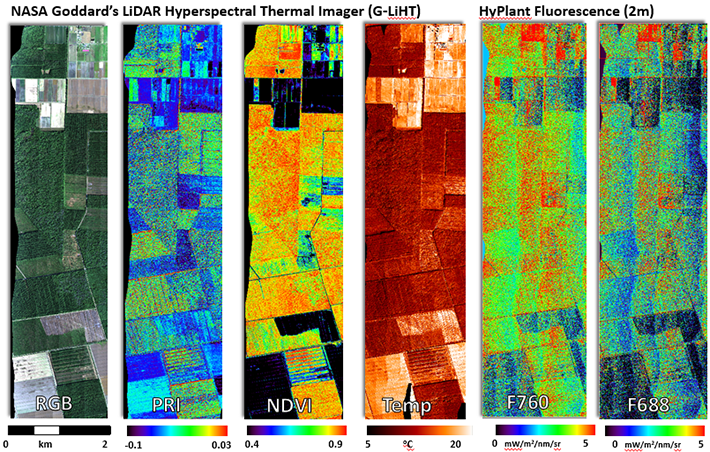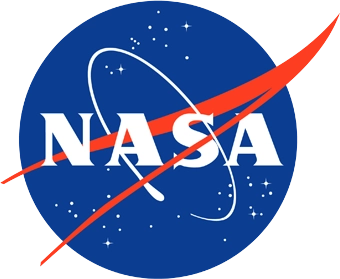Research Page
Biosphere Vegetation Physiology & Function
Recent studies have advanced the ability to measure photosynthesis and related canopy pigments using optical (hyperspectral) remote sensing. These methods provide new ways of estimating plant metabolism (productivity, stress) from direct observation, and offer insights on the climate vulnerability of ecosystems.
Researchers at GSFC have pioneered many of these approaches, beginning with the groundbreaking work of Dr. Emmett Chappelle on laser-induced fluorescence in the 1980’s, and continuing with the implementation of the first land hyperspectral satellite instrument, Earth Observing-1’s Hyperion.
Today, research within the Lab includes field and airborne experiments to understand how solar-induced fluorescence (SiF) and non photochemical quenching (NPQ) can be quantified from remote sensing data, and in turn how these parameters can be used to estimate plant carbon uptake and light use efficiency. Lab members are also partnering with international researchers on satellite-based measures of fluorescence from GOME and OCO-2, and new approaches such as the proposed ESA FLEX mission.
Areas of Investigation
Field studies on plant productivity, fluorescence and PRI (E.M. Middleton)
Tundra photosynthesis (F. Huemmrich)
Researchers at GSFC have pioneered many of these approaches, beginning with the groundbreaking work of Dr. Emmett Chappelle on laser-induced fluorescence in the 1980’s, and continuing with the implementation of the first land hyperspectral satellite instrument, Earth Observing-1’s Hyperion.
Today, research within the Lab includes field and airborne experiments to understand how solar-induced fluorescence (SiF) and non photochemical quenching (NPQ) can be quantified from remote sensing data, and in turn how these parameters can be used to estimate plant carbon uptake and light use efficiency. Lab members are also partnering with international researchers on satellite-based measures of fluorescence from GOME and OCO-2, and new approaches such as the proposed ESA FLEX mission.
Areas of Investigation
Field studies on plant productivity, fluorescence and PRI (E.M. Middleton)
Tundra photosynthesis (F. Huemmrich)

